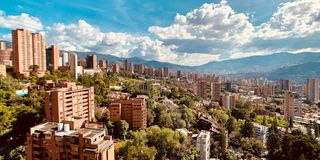Futuristic cities

What you need to know:
Although physical spaces do not cause crime, they can facilitate it. New Ugandan cities should plan for safe and livable spaces.
The example of Medellin (Colombia) in Latin America that the new city administrations of Uganda should note early.
Recently, government created many cities although the process of operationalisation of these cities is taking a phased approach. Accordingly, ten cities (Arua, Gulu, Lira, Soroti, Mbale, Jinja, Masaka, Mbarara, Fortportal and Hoima) have become operational especially starting this FY. 2021/2022. One key issue that the new cities have to prepare to deal with early enough is that of urban safety. It is important to note that the new cities have taken onboard many residents - hitherto villagers, majority of whom are still naïve about city life. On this note, permit me to stateboldly that early city planning should be the way forward for these new cities. My concern is not only to highlight the importance of city planning but also to make a case for how this city planning should be done especially in light of safety in the Ugandan cities. Drawing from the story of Medellin, good urban design that is informed by urban intelligence is a necessary tool for achieving urban safety in the 21st century.
Medellin city in South America, has received many global awards including the famous ‘’Most Innovative City 2013’’ and the Holcim Award 2015. The story of Medellin is an amazing ‘’Chronicle of a Resurrection Foretold’’ in which the power of collaboration between local community, architects, urbanists and governance drives the narrative. In reality, the story of Medellin should instead add more confidence to the Ugandan urban authorities to think deeper in the direction of community approach to town planning. This is because a study of the world’s safest cities which Ugandans admire and always wish to visit, including; Tokyo, Singapore, Osaka, Toronto, Melbourne, Amsterdam, Sydney and Stockholm, reveal that the urban communities living in these cities usually play crucial roles in urban planning systems. On the other hand, the urban planning systems of these countries also respond to the needs of their communities by making them safe and livable.
The name Medellin itself is an encouragement to urban communities to love their city of Medellin. Medellin means, empowerment of the communities and development of local democracy, to co-create urban transformation. Therefore delving into the design of Medellin, the architecture of Medellin is itself unique. The architecture of Medellin expresses the kind of identity of urban development with representative civic buildings, public spaces and infrastructure that offers not only functional solutions, but a representation of democratic and civic values, for coexistence and social inclusion. This means, government of Uganda including the new city administrations should promote a new era of social urbanism.
In 1992, Medellin was ranked the world’s most murderous city and many of its citizens were personally affected by the drug war. Pulling itself out of one of the darkest moments in the Colombia’s violence history, Medellin embarked on a mission to break the urban divide with a campaign of social urbanism that would unify the city, integrating the poorest slums to the city with first class architecture and urban infrastructure. Twenty years later, the Colombian wonder has taken centre stage as one of the world’s leading cities for development, social change and innovation.
What the new city administrations in Uganda need to note is that a city is a mixed social conglomerate, and as such, prone to crime/unsafety and conflict. Crime as its worst response is manifested in various ways, but always with three components in common: a victim, a perpetrator and a physical space. The last one, although it does not cause crime, can facilitate it or inhibit it. There are many examples of urban design features reflected in Uganda’s urban landscapes, which provide an enabling environment for crime to thrive. These spaces are devoid of people, out of urban systems, impermeable, fragmented, dispersed, morphologically inconsistent and socially segregated. What is therefore very urgent is to make the urban centres and in particular, the new cities in Uganda integrated to urban systems. These urban centres should also be permeable as to ensure a permanence, social cohesion and institutional presence as critical factors for inhibiting crime through urban planning lens. As I conclude, I would like to appeal to government to build capacity among physical planners, engineers and law enforcement agencies to embrace urban design that promotes safety in the Ugandan cities. For instance, it is important that the police start working closely with physical planners for promoting designs that can help augment efforts towards achieving safer urban environments.




